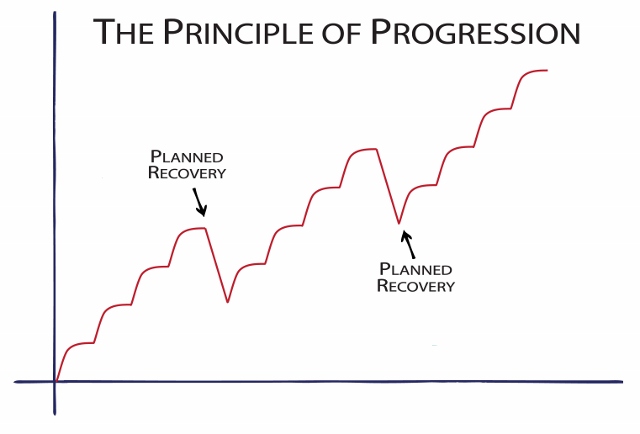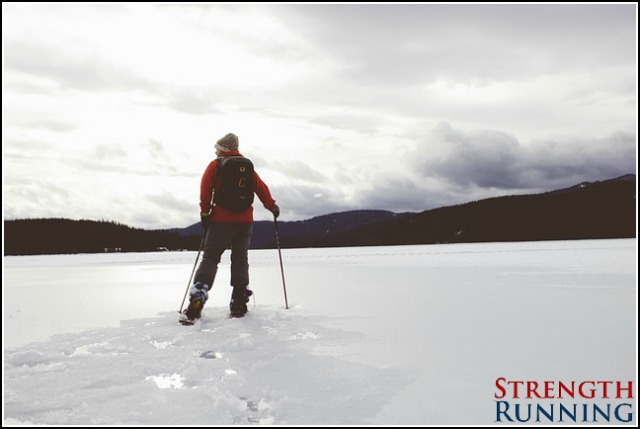Dear runners, winter is upon us! Scroll through Instagram and you’ll see countless photos of #SnowZilla aka Blizzard Jonas.
Running through snowmageddon is my personal hell, so instead I shared the ridiculous sunrise that accompanied me on my long run last weekend:
Not a bad view from my kitchen window #sunrise #Denver #nofilter
A photo posted by Jason Fitzgerald (@jasonfitz1) on
Even if you’re not shoveling four feet of snow from your driveway, you may have to change your training this winter. With icy roads, growing snow piles, and sub-zero temperatures it’s bound to happen at some point.
We’ve talked before about winter running (definitely check that out for a refresher on winter running gear, safety, and why it’s harder to run in the cold).
But if you can’t get outside to run this winter, how do you stay in shape?
After reading today’s post, you’ll have a Plan B – and Plan C and D! – workout for when you can’t run outside..
I can’t run outside… what do I do?!
No matter the reason why you can’t run outside this winter, there are still options to keep your fitness improving.
If you plan to have a successful spring season of racing, it’s critical that you remember the principle of progression:

Preparation for the spring season starts NOW. If you don’t do anything until it’s nice out, then you won’t be in shape until the summer – when it’s too hot to race fast anyway.
But there are times when you simply can’t run, like when snow drifts cover your front door and you can’t even see your car outside.
So let’s remember the Plan B Technique and set up systems to ensure success.
Plan A: Run Outside Despite the Conditions
Plan A is to always run the planned worked outside (or on the treadmill if that’s where you were to run anyway).
If it’s cold, get the right winter running gear. I’ve coached runners in Alaska and Norway that regularly run in temperatures of -30° F so no excuses! Play like a champion!
If it’s snowing, run easy in the snow. Instead of aiming for distance (“I’m going to run 5 miles”) run for time and focus on effort, not pace.
If you’re sick, then most likely you can still run. Your illness won’t get worse if it’s just a headache, sinus congestions, a cough, or a normal “cold.” But stay home and rest if you have a fever or significant chest congestion. Just remember: “neck up, ok to run. Neck down, stay home and rest.”
In fact, 30-45 minutes of moderate exercise (not a race, fast workout, or long run) can stimulate the immune system!
Plan A requires a bit more mental toughness, planning, and high-quality winter running gear. But usually, it’s still possible to run outside no matter the conditions.
Plan B: Move it Indoors
While you can run on some snow, what if there’s three feet of snow? What if you’re not feeling that adventurous?
Plan B is to simply run your scheduled workout inside on a treadmill.
Almost any workout can be simulated on a treadmill. Controlling pace is more precise. And you can stop at any time if you need to. Running on “the dreadmill” has its disadvantages – I’d rather watch paint dry – but it’s a worthy training tool.
You just need to either own a treadmill or have access to a gym. Not everyone does so that leads us to Plan C.
Plan C: Rearrrange Your Training Week
If you’re scheduled to run long or complete a challenging workout, it may be impossible with the winter conditions outside.
But can you still do a short, easy run in the snow? It’s possible, so Plan C is to schedule an easy run or rest day but do your more challenging run later in the week when the conditions improve.
Let’s look at an example so it’s clear how to do this. If this is your normal schedule but it snows heavily on Tuesday:

Then you can change your schedule to this:

Just follow these rules:
- Keep at least one, but preferably two, days in between your faster workout and long run. Spreading your effort throughout the week is critical.
- Run easy (with strides) before a hard day rather than taking multiple days off. You’ll feel better on the hard day, whether that’s a long run or workout, because the easy run has “primed” your body for the harder effort.
- Always prioritize the most important runs of the week: the long run for long distance runners and the faster workout for 5k/10k runners. Skipping shorter runs is much more acceptable.
Being flexible with your training will help you get through the winter months when Mother Nature are often conspiring against you.
Remember: a training plan is just a roadmap. You can take a few detours!
Plan D: Cross-Train

Most runners loathe cross-training – and I get it! Runners want to run. But sometimes, you simply can’t.
Skipping a run – especially a long run or workout – isn’t ideal. But the next best thing is to simulate the same run while cross-training.
In college, our cross country used a simple method for estimating “mileage” with cross-training: 10 minutes = 1 mile. This included a 3-minute buffer since most of our mileage was based on an average 7:00 / mile pace.
Here are a few ways you can simulate various workouts inside:
- Instead of 5 miles with 6x400m at 5k Pace, you can bike for 60 minutes with 6x2min hard intervals.
- Instead of a 12 mile long run (that usually takes you two hours), try two and a half hours of pool running (warning: will be mind-numbingly boring!)
- Instead of 7 miles with 3 miles of tempo running, bike for 90 minutes with 30 minutes of “comfortably hard” riding in the middle
These cross-training workouts are very similar to what you were originally planning to run. They’ll simulate similar adaptations and maintain your fitness.
Just choose forms of cross-training that are specific to running: cycling, pool running, and the elliptical are my three favorites. But since it’s winter, cross-country skiing is another great option.
And don’t forget the strength work!
Plan E: Binge on Netflix
You can’t run outside, you have no treadmill or cross-training access, and rearranging your schedule is impossible. What now?
It’s time to call mulligan and skip your run. Abandoning a run isn’t the best idea, but take a look at the Principle of Progression graph above.
See those “planned recovery” periods? You can take an unplanned recovery during severe winter weather and continue progressing – just make sure to get back to work when the weather conditions improve!
There are still opportunities to work on your fitness at home. Almost all of the runner-specific strength workouts I recommend can be done anywhere:
- The Standard Core Routine is a “bread and butter” core workout every runner should do regularly
- The ITB Rehab Routine focuses on hip and glute strength, making it specific to the needs of runners
- The Tomahawk Workout is a more advanced general body strength and stability routine
With minimal equipment (an exercise band and medicine ball) you can get stronger, reduce your injury risk, and make your return to running a lot smoother.
Focus on Your Weaknesses
It’s expected that training will be disrupted by winter weather. But that doesn’t mean it’s a time for sloth and building an intimate relationship with your couch.
Whatever your weaknesses are, you can use this time to improve your running.
If you’re prone to injuries, do more strength work. These coaching lessons (free) will also help.
If you’re new to running or don’t run more than 20-30 miles per week, focus more on cross-training to help build endurance without risking a running injury.
If you’re often derailed by low motivation, join a team that will hold you accountable.
If you STILL can’t exercise for some reason, then why not invest in your running education?
Read a good running book.
Register for a spring running camp.
Learn what it takes to eat like a runner.
Rather than doing nothing, do something that helps your running. The possibilities are nearly endless, so choose what interests you and get to work!